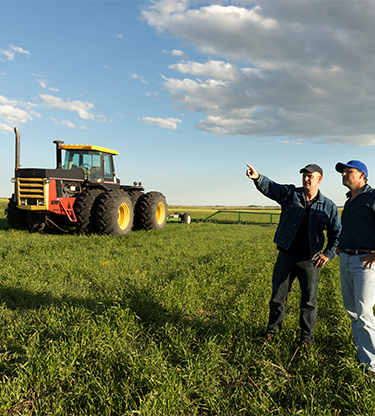The future of currencies: Agriculture

Share Story
Interest rates affect the costs of investments, loans, and the values of prime farming land, among numerous other factors like import and export costs.
4 minute readIn this article, we explain how interest rates affect the agricultural finance system and the profitability of agricultural markets.
The effect of exchange rates on agriculture
How do exchange rates affect business for farmers? Agribusiness is an industry characterized by the practice of pre-ordering. As such, exchange rates impact agricultural sectors in a number of ways, altering the price of imported inputs, the prices of exports, and the competitiveness of the industry as a whole.
Farming is an industry that is particularly vulnerable to volatility in foreign exchange rates. Many large-scale agribusiness companies pre-order supplies, machinery and produce in advance, and the payments for these assets are often controlled by exchange rate volatility.
This can lead to farmers paying far more than they expected for these items – and passing these expenses on to consumers or shouldering the financial pressure themselves.
Agricultural production and FX
A large percentage of farm inputs, such as machinery, equipment and chemicals, are imported as well, and exchange rates will dictate those costs. A rise in the value of a local currency will decrease the costs of these imported inputs, thereby increasing agribusiness’s output volumes.
Exchange rate fluctuations can affect the competitiveness and value of local exports in international markets as well. An increase in the value of a local currency can influence the agricultural industry by making local products more expensive for importers unless farmers are willing to accept lower prices for their produce.
Farmers’ products can also become more expensive in non-domestic markets if the costs of importing equipment and exporting produce are inflated, which leads to reduced demand and forces farmers to lower their sale prices.
A decrease in the value of local currency will force producers to become more competitive and increase the volume of exports. From a long-term angle, exchange rate fluctuations alter the investment and production of agriculture sectors, which can directly affect the food and agribusiness industry’s efficiency and productivity levels.
Brexit and Covid-19 have also disrupted agricultural supply and demand patterns in complicated ways. Most countries have exempted food and agribusiness companies from lockdowns and movement restrictions, but these companies are still being forced to rapidly diversify and amend their supply chains to restructure the way they supply their produce. Brexit has also reduced the available workforce and increased the amount of red tape involved in exporting produce.
This has culminated, most recently, in reports of food supply shortages in the UK – shortages that may, according to Ian Wright, the boss of the Food and Drink Federation (FDF), become a permanent feature of day-to-day life. The biggest supermarket chains, such as Sainsbury’s, Tesco, Morrisons and Iceland, have been affected by serious supply chain issues and labour shortages. The government has introduced a raft of measures to tackle the shortage of HGV drivers and make it easier for people to secure driving licenses. Mr Wright also said that the UK supply chain was short of half a million staff, or 12.5% of the total staff in the industry.
The closures of hotels, restaurants and catering due to the pandemic has shifted demand for food products to supermarkets, and many companies have had to switch production lines and expand their capacities to manage larger inventories. Others have had to hire temporary staff, move online, and deliver direct to households in order to maintain their operations.
Managing currency fluctuations in the farming industry
Currency markets are notoriously volatile, and managing currency fluctuation in the farming industry is essential to hedge your risks and preserve your profit margins. Many agribusinesses use banks to make overseas payments, while others use foreign exchange experts to obtain better rates and monitor markets to ensure they have the best chances of buying foreign currencies at the right times.
The concept of hedging currency risks is fairly straightforward. Agricultural businesses can use deposits to set up forward contracts, which allow them to lock in an exchange rate for a specified period of up to two years.
There are also more flexible options, such as market orders, available. Market orders enable agribusinesses to specify target rates, and if those rates are reached, the funds are automatically transferred.
The market order approach does not offer any guarantees, but can be combined with a stop-loss order that specifies the lowest limit a farmer is willing to accept. This allows agribusinesses to protect their bottom lines while still taking advantage of favourable currency fluctuations in the market.


